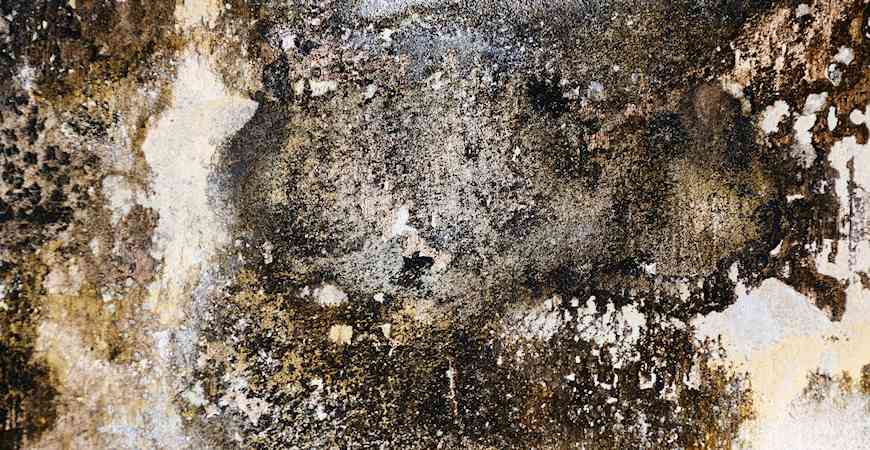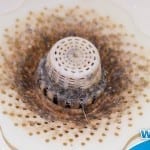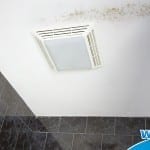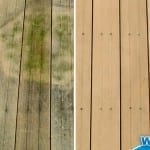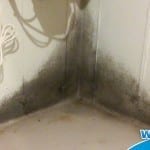
6 Ways Indoor Mold Growth Can Harm your Health, and How to Wipe It Out
Indoor mold growth doesn’t just look disgusting, smell musty, and destroy your property. Excessive indoor mold growth can pose a threat to your family’s health, especially to the youngest and most vulnerable family members.
Read on to see how mold can affect your health, and how to wipe out indoor mold easily and effectively.
1. Respiratory Infection
According to the Centers for Disease Control and Prevention (CDC), children who are otherwise healthy can develop respiratory infections if they spend too much time in an environment where there are a lot of mold spores in the air. If your home has a lot of mold growth, it could be putting your children at risk.
The North Carolina Department of Public Health also warns that healthy people who are exposed to extreme levels of mold spores, through activities such as cleaning out chicken coops, can develop serious lung infection histoplasmosis.
2. Allergies
Mold is one of the most common environmental allergies. Any family member who is already allergic is at risk of developing allergy symptoms if your home has indoor mold growth.
Allergy symptoms can include coughing, sneezing, runny nose, headache, joint pain, scratchy throat, itchy, watery eyes, and hives.
Allergy symptoms can keep your mucous membranes inflamed and deplete your immune system. Therefore making you more susceptible to catching the next cold or flu that comes around.
3. Toxic Effects
Some mold varieties produce a substance called mycotoxin which, in the right dose, is harmful to humans. It’s important to note that the black-green mold Stachybotrys chartarum is one type of mold that produces a mycotoxin that becomes airborne.
Although there isn’t a scientific consensus on how much Stachybotrys chartarum is necessary to cause damaging health effects, it’s best to avoid inhaling it.
4. Asthma
Asthma is a respiratory disorder that causes wheezing, chest tightness, coughing, and difficulty breathing due to inflammation and constriction of the lungs. It could be mild, serious, or even life-threatening.
The CDC warns that early mold exposure may increase some children’s risk of developing asthma. Mold exposure can also increase symptoms in people who also have asthma, especially if they also have a mold allergy.
Asthma and allergies often go hand-in-hand; more than half of people with asthma also have respiratory allergies.
5. Hypersensitivity Pneumonitis
The CDC reports that some people who are exposed to excessive mold spores have developed hypersensitivity pneumonitis. This is a potentially serious respiratory condition in which repeated exposure to a substance such as mold spores leads to an oversensitive immune system, which then attacks parts of their own lung tissue.
Short-term effects of hypersensitivity pneumonitis include flulike symptoms such as body aches, chills, and coughing, but things can get much more serious in the long-term: left untreated, chronic hypersensitivity pneumonitis can cause pulmonary fibrosis, which can seriously impair or destroy lung function.
6. Coughing and Wheezing
Even healthy individuals who don’t develop any of the health problems listed above can wind up dealing with a lot of coughing and wheezing.
Furthermore, this can interfere with sleep and with the general quality of life.
Wipe out Indoor Mold with Wet & Forget Indoor!
Indoor mold growth can be tough to get rid of. If you’ve tried bleach, you know that it means a lot of messy scrubbing and rinsing, only to have the mold quickly start growing back.
Bleach only cleans the visible mold on the surface, leaving behind below-the-surface mold that can start re-growing right away. Bleach is also mostly water, so it leaves plenty of water to help the new mold grow.
Wet & Forget Indoor Mold + Mildew Disinfectant Cleaner not only cleans the mold on the surface; it also kills the mold you can’t see and inhibits mold re-growth. Wet & Forget Indoor kills the bacteria that causes that musty odor and leaves behind a light, clean scent instead of bleach’s acrid chemical odor.
Best of all, Wet & Forget Indoor gets the job done with no scrubbing or rinsing needed. Just spray and wipe! You don’t even need to dilute Wet & Forget Indoor like you do bleach because it’s ready to go when you are.
Here’s how to eliminate mold with Wet & Forget Indoor
- Spray the affected area with Wet & Forget Indoor. You can also apply Wet & Forget Indoor with a sponge or mop.
- Allow the surface to stay wet with Wet & Forget Indoor for at least 10 minutes.
- Wipe the surface dry, or allow it to air-dry.*
Wet & Forget Indoor conquers mold on hard, non-porous surfaces such as:
- Basement walls and floors
- Trash cans
- Ceramic tiles
- Finished woodwork
- Countertops
- …and even some outdoor surfaces!
DISINFECTION, VIRUCIDAL*, MOLD & MILDEW CONTROL DIRECTIONS: Apply Wet & Forget® Indoor Mold + Mildew Disinfectant Cleaner undiluted to hard, non-porous surfaces, thoroughly wetting the surfaces with a cloth, mop, sponge, sprayer or by immersion. Treated surfaces must remain visibly wet for 10 minutes.
For SARS-CoV-2, treated surfaces must remain visibly wet for 3 minutes. For Influenza Virus Type A and Human Coronavirus, treated surfaces must remain visibly wet for 1 minute. Wipe dry with cloth, sponge, or mop or allow to air dry. For visibly soiled areas, a preliminary cleaning is required. For sprayer applications, use a coarse spray device. Spray 6-8 inches from surface. Avoid breathing spray. Rinse all surfaces that come in contact with food such as countertops, appliances, tables and stovetops with potable water before reuse. Do not use on utensils, glassware and dishes.
Wet & Forget Indoor Mold + Mildew Disinfectant Cleaner kills: Pseudomonas aeruginosa, Salmonella enterica, Serratia marcescens, *Human Coronavirus,*lnfluenza Virus Type A/ Hong Kong, *SARS Associated Coronavirus cause of Severe Acute Respiratory Syndrome, *SARS-Related Coronavirus 2 SARS-CoV-2 cause of COVID-19, *Vaccinia (Pox Virus), *Norwalk Virus (Norovirus), * Rotavirus. †Proven soft surfaces sanitizer against Staphylococcus aureus and Enterobacter aerogenes.
Stop by our website to learn more about our easy solutions to everyday problems, so you can spend less time cleaning and more time enjoying life!
*Rinse all surfaces that come in contact with food such as countertops, appliances, tables, and stovetops with potable water before reuse. Do not use on utensils, glassware or dishes.

